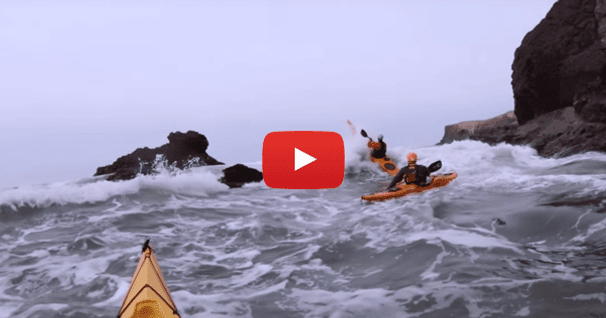SUP Fundamentals
Hi, I'm Jimmy Blakeney, with Standup.paddling.com, here to talk to you about the great sport of standup paddleboarding. In this video, I'm going to introduce a few fundamental concepts that are going to help you as you develop proper technique so that you are going to have more fun on the water and be more efficient.
A few key things to consider. One, when it comes to the blade, the number one rule of paddling is that we insert the blade fully in the water, all the way up to here, before we pull on it. We don't want to splash at the water. We don't want to partially engage the blade and then flick it out of the water. We want to place the blade fully in before we pull.
Secondly, with regards to our body, one is proper body position. My knees are slightly bent and also my shoulders are back and my back is straight. I'm not hunching over, and my knees aren't locked.
Another key thing about our body position has to do with our arms. When we paddle, we are not pulling with our arms. Our arms are simply transferring the energy. Your arms, you should have your elbows slightly bent. There will be some movement of your arms, but in general, your arms are staying fairly neutral and they are just transferring the power from our next key point about our body, and that is activating our core.
Notice right now my elbows are slightly bent, and I am rotating my shoulders and my hips. When I do this, I am able to get a wide range of motion without having to pull with my arms. That is a key thing to be able to understand and to be able to practice when you are out there on the water. Rotate your torso and engage your core. These big muscles in your abs and in your lats, those are the muscles that are going to propel you. They're going to make you efficient and they're going to allow you to paddle further, easier.
The final thing has to do with our board. With our board, what I want you to think of when you are out on the water is trying to keep that board totally flat. When you are turning, when you are moving around on this board, even when you are doing a forward stroke, you don't want that board to be wobbling around. You want that board to stay totally flat.
If you can develop board control and the ability to keep that board flat, that is going to be a great foundation that you can then build on. As you become a more advanced paddler, you can start to edge your board and develop that kind of skill as well.
So, again, to summarize, we've got our blade, our body, and our board. We've got a few fundamental points that we are going to talk about. We've got the blade fully in the water before we pull. We've got proper body position with our knees bent and our shoulders back. We've got proper arm position where I have my elbows slightly bent. And also I've got engaging and activating my core by rotating my shoulders and rotating my hips. Finally, with regards to the board, I am going to think of keeping that board totally flat when I am out there paddling.
Related Articles
I am taking a different approach to this year's resolutions. Every year I spend a little time over the…
Ken Whiting answers the big question for new paddlers - Do you go for a canoe, a kayak, or a stand up…
By changing how you edge and balance your boat you can increase your stability and adaptability. Using…
When a situation occurs while paddling in a group, conditions don't stop. Learn some pointers on how to…



